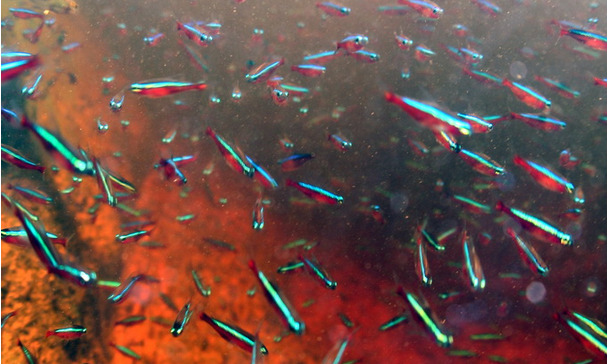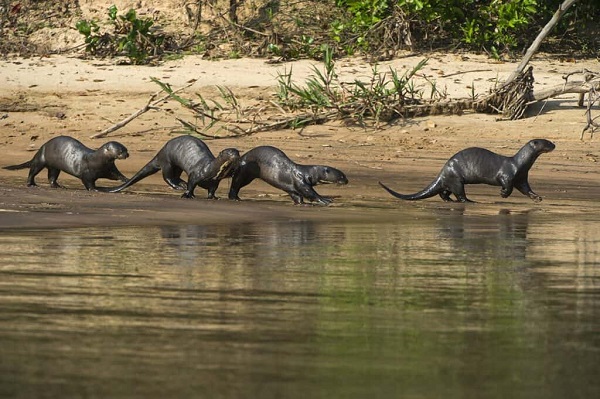An Aquatic Paradise Like No Other
Published by Staff Fish Nerds on May 16th 2023
The Pantanal is a vast wetland region located in South America, primarily in western Brazil but also extending into portions of Bolivia and Paraguay. It is considered one of the largest wetland areas in the world, covering an estimated area of 140,000 to 195,000 square kilometers (54,000 to 75,000 square miles).
This floodplain is known for its incredible biodiversity and serves as a haven for numerous plant and animal species. It is home to a rich variety of aquatic plants, marshes, lagoons, and rivers, creating a unique ecosystem. The region experiences seasonal flooding, with water levels rising during the rainy season (November to March) and receding during the dry season (April to October). This cycle of flooding and drying greatly influences the Pantanal's ecological dynamics.
This is truly an unmatched paradise for nature lovers, boasting an impressive array of wildlife and stunning landscapes. One of the lesser-known attractions of this region is the fascinating freshwater aquarium fish that can be found in its rivers, streams, and wetlands. If you're an aquarium enthusiast, a visit to the Pantanal is a must-see destination.
This enchanting floodplain is home to an incredible variety of fish species, many of which are endemic to the region. Among the most popular aquarium fish found in the Pantanal are the cardinal tetra (Paracheirodon axelrodi) and the neon tetra (Paracheirodon innesi), two small and brightly colored species that are commonly kept in home aquariums. The cardinal tetra is distinguished by its bright blue stripe and red underside, while the neon tetra has a bright blue stripe and a red tail.

Cardinal Tetras frolic in the tannin-stained waters of The Pantanal
Another popular species found in the Pantanal is the discus fish (Symphysodon spp.), a larger and more colorful species that is highly prized by aquarium enthusiasts. Discus fish can be found in a range of colors and patterns, including red, blue, green, and brown. They are known for their unique body shape, which is flat and round, and their stunning display of colors.
In addition to these popular species, the Pantanal is home to a variety of other interesting fish, including Borelli’s dwarf cichlid (Apistogramma borellii), the giant gourami (Osphronemus goramy), and the peacock bass (Cichla spp.). Visitors can observe these species in their natural habitat, swimming freely in the clear waters of the Pantanal.
If you're interested in seeing these fish up close, there are a number of ways to do so. One option is to take a guided fishing trip, which can be arranged through many of the lodges and guesthouses in the area. These trips offer the opportunity to catch and release a variety of fish species, and the knowledgeable guides can provide information on the local ecology and wildlife.
Another option is to visit one of the many aquarium fish farms in the region, where visitors can observe a variety of fish species up close and learn about their biology and behavior. Many of these facilities also offer educational programs and workshops for visitors of all ages. Of course, visitors to the Pantanal should also take time to explore the region's other attractions. Whether you're interested in wildlife watching, birdwatching, hiking, or simply soaking up the natural beauty of the wetland, the Pantanal has something for everyone. Guided tours and excursions are available to help visitors make the most of their time in this unique and fascinating region.
Regardless of the time of year, wildlife watching is a major highlight of any visit to the Pantanal. The wetland is home to the highest concentration of wildlife in the Americas, with an estimated 10 million caimans alone. In addition to these prehistoric-looking creatures, visitors can spot giant otters playing in the water, tapirs wandering through the forest, and capybaras lounging on the riverbanks. For many visitors, the ultimate goal is to catch a glimpse of the elusive jaguar, which can occasionally be seen lounging in a tree or stalking its prey along the riverbanks.

Giant Otters running along the bankside are a real treat for the naturalist
The Pantanal is well known as a natural bird sanctuary. The wetland is home to an incredible array of bird species, including the hyacinth macaw, the largest parrot in the world, as well as the jabiru stork, which can reach a height of five feet. Visitors can also spot toucans, kingfishers, and various species of heron and egret, among others.
In addition to its wildlife, the Pantanal is also home to a rich cultural heritage. The region has been inhabited by indigenous peoples for thousands of years, and visitors can learn about their traditions and way of life through visits to local communities. The region was also an important center of ranching in the 19th and 20th centuries, and visitors can still see evidence of this heritage in the form of the traditional pantaneiro cattle ranches, many of which offer horseback riding and other activities.
As with any natural area, visitors to the Pantanal should take care to minimize their impact on the environment. This means following the principles of Leave No Trace, staying on designated trails and roads, and not disturbing wildlife or their habitat. Visitors should also be aware of local regulations regarding fishing and collecting of fish, and should only do so with proper permits and in accordance with local laws.
The Pantanal floodplain in South America is a must-see destination for aquarium enthusiasts, offering the chance to see a variety of fascinating freshwater fish species in their natural habitat. With its stunning landscapes and incredible biodiversity, this is a destination that will leave a lasting impression on all who visit.

